Upgrading a contact centre is a big investment that can make a huge difference in customer satisfaction, operational efficiency, and your business’s bottom line. That said, many businesses struggle with budgeting for this upgrade, particularly if they’re working with legacy systems and tight budgets. Proper planning is vital to ensure that your contact centre upgrade meets both your needs and your financial resources.
In this article, we’ll walk you through the steps of how to budget for a contact centre upgrade, from defining your goals and assessing current technology to setting a realistic budget and choosing the right tools for the job. Follow these tips to successfully plan, prioritise, and execute a successful upgrade while keeping your finances in check.
1. Define your upgrade goals and objectives
The first step in budgeting for a contact centre upgrade is to clearly define your goals and objectives. What do you want to achieve with the upgrade? Are you looking to improve customer experience, increase agent productivity, or integrate more advanced technologies, such as AI or omni-channel capabilities? Setting clear goals will help you understand what areas need the most attention and how your budget should be allocated.
Here are some key objectives to consider:
- Improving customer experience: Reducing wait times, providing more self-service options, and offering personalised service can all contribute to a better customer journey.
- Increasing productivity: Simplifying workflows, automating processes, and improving call routing can help make the contact centre more efficient, reducing costs in the long run.
- Adopting new technology: Investing in tools such as cloud-based solutions, AI-powered chatbots, or advanced CRM systems may be key to your upgrade.
By aligning your goals with your overall business strategy, you’ll have a better idea of which technologies and tools are worth the investment, and how to prioritise them within your budget. It’s important to consult different departments and stakeholders to ensure you are factoring the broad range of needs within your business.
2. Assess current technology and infrastructure
Before you can decide what you need to upgrade, you must first evaluate your current contact centre setup. This includes everything from the hardware and software to workflows and staffing. Conducting a thorough audit will help you identify what’s working, what’s not, and where the biggest gaps are.
When assessing your current system, consider:
- Outdated technology: Are your systems running on legacy infrastructure that is difficult or expensive to maintain? Are there any tools or technologies that are no longer meeting the needs of your agents or customers?
- Inefficient workflows: Are there bottlenecks or delays in your current processes? Identifying areas where automation or better integration could help improve efficiency can save time and money.
- Staffing levels: Does your team have the right number of agents to handle peak periods? Are your agents properly trained on the systems you currently use, or will they need additional training with the new technology?
The audit will also help you determine which areas need immediate attention and which can be upgraded gradually over time, allowing you to allocate your budget more effectively.
3. Determine key technologies and tools for the upgrade
Once you’ve defined your goals and assessed your current setup, the next step is to decide which technologies and tools are needed to meet your objectives. There are numerous options available, and choosing the right ones can feel overwhelming. However, by prioritising the tools that best address your specific needs, you can create a more focused and cost-effective budget.
Here are a few technologies to consider:
- Cloud-based solutions: These allow you to scale your contact centre more easily, reduce infrastructure costs, and improve flexibility for remote work.
- AI-powered tools: Chatbots, virtual assistants, and AI-based analytics can help improve efficiency, reduce human error, and provide a better experience for customers. Consider a phased approach to AI adoption.
- Omni-channel capabilities: Offering consistent communication across voice, chat, email, and social media channels can improve the customer experience by making it easier for customers to reach your business on their preferred platform, whenever suits them.
- CRM systems: A robust CRM system can provide agents with all the customer data they need to resolve issues quickly and personalise the experience.
By focusing on the technologies that will have the greatest impact on your contact centre’s performance, you can prioritise your spending and make the most of your budget.
Building a strong business case
Before setting a budget, you need to justify the investment. A well-structured business case should include:
- Cost-benefit analysis: Compare the costs of maintaining outdated systems versus the potential savings from automation, AI, and cloud-based solutions.
- Operational efficiency gains: Highlight reductions in call handling time, improved first-contact resolution rates, and lower operational costs.
- Customer retention and satisfaction impact: Upgraded systems can lead to better customer experiences, increasing loyalty and lifetime value.
4. Set a realistic budget and timeline
Once you’ve identified your goals, assessed your current systems, and chosen the technologies you need, it’s time to set a budget and timeline for your contact centre upgrade. This is one of the most critical parts of the process, as it helps ensure that your plans are financially feasible and achievable within a reasonable timeframe.
When setting your budget, consider the following:
- Initial investment vs. ongoing costs: Some technologies, such as cloud solutions or AI tools, may require sizeable upfront costs but offer long-term savings through reduced operational expenses. Factor both the one-time costs and the recurring costs (subscriptions, maintenance, etc.) into your budget.
- Training and onboarding costs: Budget for training your agents and support staff on the new tools and processes. While the technology itself is essential, ensuring that your team knows how to use it effectively is equally important.
- Scalability and growth: Plan for future expansion. Choose technologies that can scale as your business grows, ensuring that you don’t have to make frequent, expensive upgrades.
Set a timeline that aligns with your goals, considering the time needed for procurement, integration, and testing. Ensure there’s enough time for thorough training and allow for a buffer to address any unexpected challenges along the way.
5. Prioritise the most impactful upgrades
When budgeting, it’s crucial to focus on the upgrades that will have the most tangible impact on your contact centre’s performance. It’s easy to get caught up in adding flashy new features, but prioritising practical, high-value upgrades will give you the best return on investment.
Here’s how to prioritise:
- Identify pain points: Focus on upgrading areas that are causing the most frustration for your team or customers. For example, if long wait times are a common issue, investing in automated call routing or self-service options could offer immediate relief.
- Consider ROI: Look at the technologies that will provide the best value for your money. Will automating certain processes save time and reduce human error? Will upgrading your CRM improve customer satisfaction and lead to better retention?
- Start small, scale up: If you’re working within a tight budget, consider starting with a smaller, more affordable upgrade that addresses immediate needs, and then gradually roll out more advanced features as your budget allows.
Focusing on the most impactful upgrades helps ensure that your budget is allocated effectively and that you’re addressing the most pressing needs first.
6. Account for unexpected costs and plan for contingencies
No matter how well you plan, there will always be unexpected costs when upgrading a contact centre. Whether it’s a hidden cost of new software, additional training needs, or unforeseen technical challenges, it’s essential to plan for these contingencies so that they don’t derail your upgrade.
Here are a few ways to account for unexpected costs:
- Set aside a contingency fund: It’s wise to reserve a portion of your budget—typically 10-15%—for unexpected expenses. This gives you the flexibility to deal with any surprises without overhauling your plans.
- Test thoroughly before full deployment: Conducting pilots and testing the new systems before full implementation can help identify issues early and avoid costly mistakes down the line.
- Consult with experts: Involving experts in the process—whether it’s a technology consultant or a project manager—can help you anticipate challenges and avoid costly delays.
7. Monitor performance and adjust as needed
After your contact centre upgrade is complete, it’s important to regularly monitor its performance. The technology you’ve implemented should be regularly assessed to ensure it’s meeting your initial goals. Pay close attention to metrics such as response times, customer satisfaction, and agent productivity. If things aren’t going as planned, adjustments may be necessary.
Here’s how to keep your upgrade on track:
- Track key performance indicators (KPIs): Look at the metrics that matter most to your contact centre’s success. Are your wait times shorter? Is customer satisfaction improving? Is the team handling more calls with the same staff levels?
- Gather feedback from agents: Your agents are the best resource for understanding how the new systems are working in practice. Regularly ask for their feedback to identify pain points or areas where they may need additional training or support.
- Be open to adjustments: If the technology isn’t delivering the expected results, consider tweaking your approach. Whether it’s making adjustments to workflows or reconfiguring your software, continual refinement is key to maximising the return on your investment.
By monitoring your upgrade closely and remaining flexible, you can ensure your contact centre continues to perform at its best.
Why choosing the right technology partner matters
Upgrading a contact centre is not just about technology—it’s about working with the right partner to ensure implementation with minimal disruption that will deliver long-term success. A technology partner can:
- Provide strategic guidance to align upgrades with business goals.
- Ensure that new tools integrate effectively with existing systems
- Offer ongoing support through customer success teams to maximise ROI.
Working with an experienced CCaaS provider ensures your upgrade isn’t just a one-off project but a long-term investment in customer experience and your business success.
Final thoughts: Stay proactive and flexible in your contact centre upgrade
Upgrading your contact centre is a crossroads moment for your business and it requires careful planning, budgeting, and execution. By identifying your goals, researching technology, setting a realistic budget, and monitoring performance, you can ensure that your investment pays off in the long term.
As your contact centre adapts to changing customer expectations, remember to stay proactive, and always be prepared to make adjustments as needed. The key to success lies in continuous improvement and embracing the future of customer service.
Ready to upgrade your contact centre? Contact us today for a consultation, and let us help you through the process with expert insights and tailored solutions for your business.





